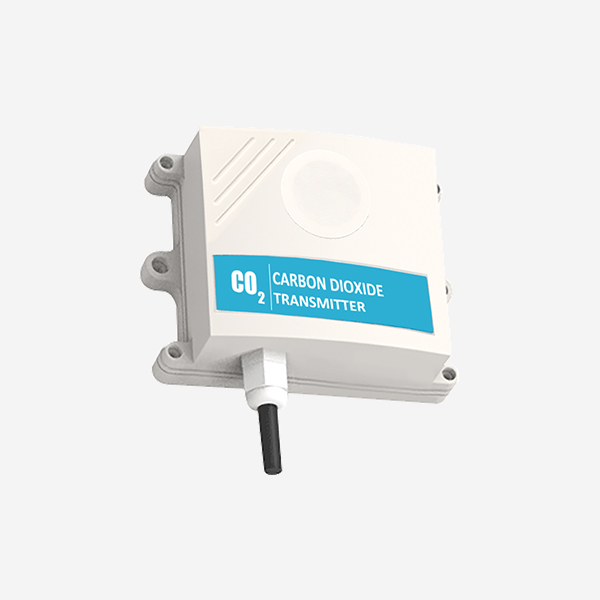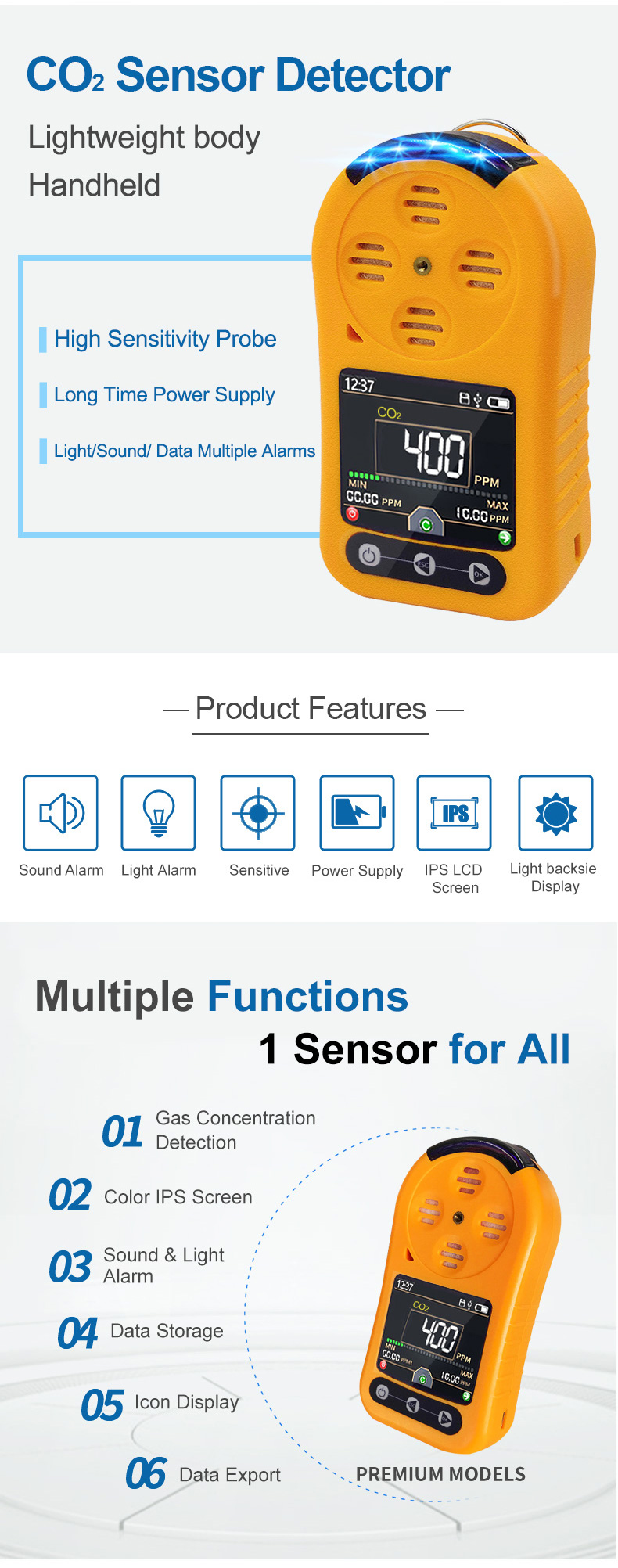CO2 sensor

CO2 sensor play a vital role in monitoring and controlling carbon dioxide levels. This paper discusses the importance of carbon dioxide sensors to the climate and their impact on climate change mitigation.
Wall Mounted CO2 Gas Detector-Fixed Mini carbon dioxide Sensor
Understanding the Importance of Carbon Dioxide (CO2) Monitoring:
Carbon dioxide is a greenhouse gas that contributes significantly to global warming and climate change. It is primarily released through the burning of fossil fuels, deforestation, and various industrial processes. Monitoring carbon dioxide levels in the atmosphere and other environments is crucial for understanding the impact of human activities on climate.
How CO2 Sensor Work:
CO2 sensors are devices that measure the concentration of carbon dioxide in the air or different settings. They work based on various principles, including infrared absorption, chemical reactions, and solid-state technologies. These sensors can provide accurate and real-time data regarding CO2 levels, enabling scientists, policymakers, and individuals to make informed decisions and take necessary actions to reduce emissions.

CO2 sensors have a wide range of applications in different sectors, including:
a. Climate Research: CO2 sensors are extensively used in climate research to measure carbon dioxide levels in the atmosphere accurately. This data helps scientists analyze the impact of human activities on climate change, devise climate models, and evaluate potential mitigation strategies.
b. Indoor Air Quality: CO2 sensors are essential in monitoring and maintaining optimal indoor air quality. High levels of CO2 can lead to poor ventilation and negatively impact human health and cognitive functions. CO2 sensors in buildings and enclosed spaces can trigger ventilation systems to ensure fresh air circulation and reduce energy waste.
c. Greenhouse Gas Monitoring: CO2 sensors are used in agricultural practices, especially greenhouse operations, to measure and control CO2 levels. By maintaining appropriate CO2 concentrations, greenhouse owners can promote plant growth and maximize crop yields while minimizing energy consumption.
d. Industrial Processes: CO2 sensors are employed in various industrial applications to monitor emissions and ensure compliance with environmental regulations. They help industries optimize their processes, reduce carbon footprints, and identify potential areas for improvement.
Advancements in CO2 Sensor Technology:
Over the years, CO2 sensor technology has seen significant advancements. These include:
a. Miniaturization: Modern CO2 sensors are smaller, more compact, and cost-effective, enabling their integration into a wide range of devices and systems.
b. Wireless Connectivity: CO2 sensors can now be connected wirelessly to networks, allowing for remote monitoring and data collection.
c. Enhanced Sensitivity and Accuracy: Advanced CO2 sensors offer improved sensitivity, accuracy, and stability, providing more precise measurements and reliable data for analysis.
d. Energy Efficiency: CO2 sensors are designed to be energy-efficient, consuming minimal power while still delivering accurate results.
The Role of CO2 Sensors in Climate Change Mitigation
CO2 sensors play a crucial role in climate change mitigation efforts. By providing accurate and real-time data on CO2 concentrations, these sensors empower individuals, organizations, and governments to:
a. Identify and Reduce Carbon Footprints: With CO2 sensor data, businesses can identify areas of high emissions and implement measures to reduce their carbon footprints.
b. Optimize Energy Efficiency: CO2 sensors help in optimizing energy efficiency by triggering the automatic control of ventilation systems, adjusting HVAC settings, and promoting energy conservation practices.
c. Raise Awareness: Real-time CO2 data can raise awareness among individuals and communities about the importance of reducing emissions and adopting sustainable practices.
d. Inform Policy Decisions: Policy and decision-makers can use CO2 sensor data to establish effective climate change policies, regulations, and emission reduction targets.
Conclusion
CO2 sensors are indispensable tools in the fight against climate change. With their ability to monitor and measure carbon dioxide concentrations accurately, these sensors enable us to understand the impact of human activities on the climate and take appropriate actions to mitigate greenhouse gas emissions. Continued advancements in CO2 sensor technology, coupled with widespread adoption and utilization, will play a crucial role in building a sustainable and climate-resilient future for generations to come.